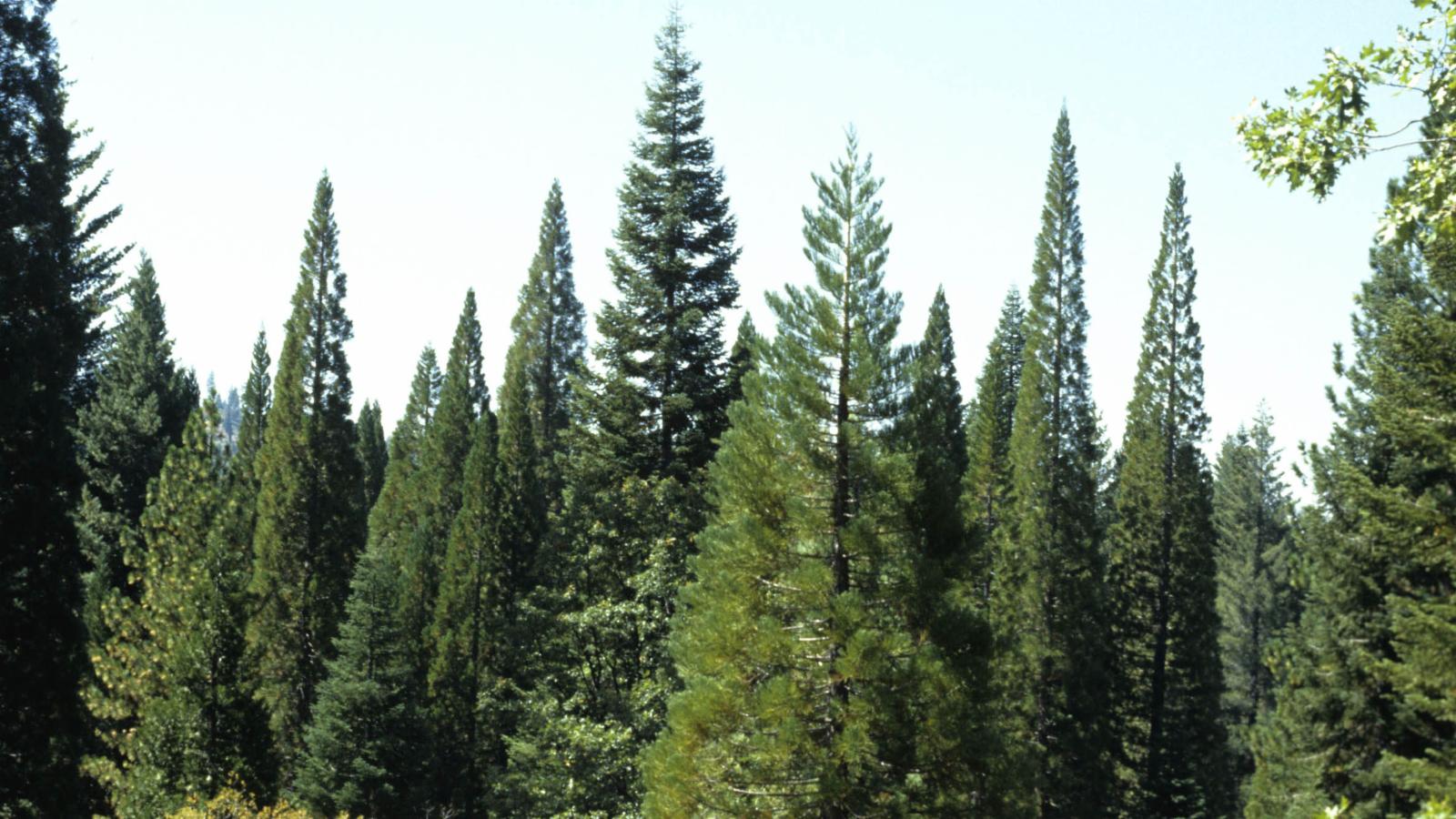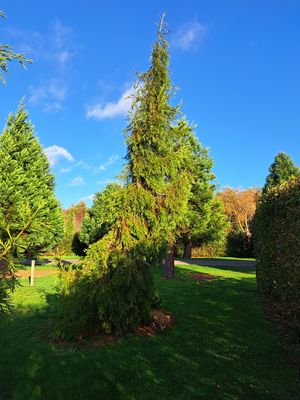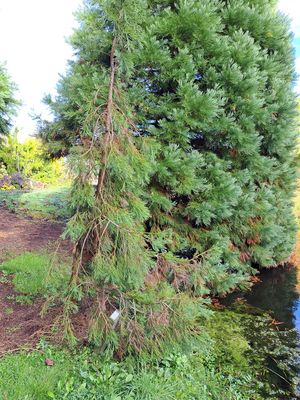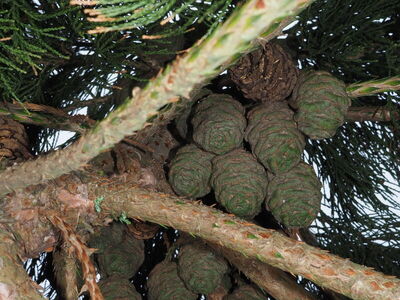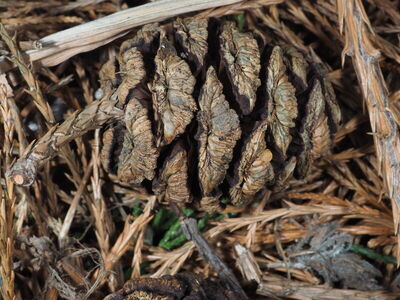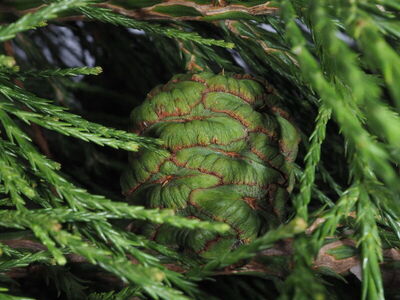Geography and distribution
Native to California in the United States, the giant redwood is found on the western slopes of the Sierra Nevada mountain range, where it occurs in about 75 distinct groves. It inhabits mixed conifer forests at 1,100 - 1,500 m above sea level.
Description
An evergreen tree with distinctive spongy red bark, the giant redwood can reach up to 95 m in height and 12 m in diameter. The deeply furrowed bark can be up to 60 cm thick. The branches form a rounded crown towards the top with individual branches sweeping downwards with upturned ends. The leaves are small and scale-like and are in spirals. Male and female cones are borne on the same tree, and are tiny in relation to the tree as a whole, the female ones measuring a mere 5-7 cm. The cones take at least two years to ripen; however, many cones remain green and unopened for anything up to 20 years. They are reddish-brown when mature and contain numerous, flattened, winged seeds.
Reproduction of the giant redwood
Natural bush fires are not as common as they once were in California, but are essential for giant redwood reproduction. The bark is fire-resistant, so the tree is left unharmed after a fire while other plant life around it is cleared. This is a prerequisite for seedlings to grow, helped along by a layer of ash as a seedbed. The heat from the fire also starts the process, as it causes the cones to open, dispersing their seeds on the wind.
Giant by name...
The largest living specimens are found in its native California, where the largest tree is known as 'General Sherman'. At the last measurement, it stood 84 m (275 ft) high, with a trunk circumference of 31 m (103 ft) at ground level. It is estimated to be around 3,200 years old.
The speed at which Sequoiadendron giganteum grows when young is nothing short of phenomenal. In Italy, a young tree reached a height of 22 m (72 ft) in just 17 years. Growth rates depend largely on the habitat and weather conditions, and while the tree can survive in temperatures as low as -30°C, it tends to flourish in a humid environment with dry summers and snowy winters.
Threats and conservation
The giant redwood has been rated as Vulnerable (VU) according to IUCN Red List criteria, populations having been reduced as a result of large-scale logging between 1856 and 1955. Measures taken to prevent bush fires also led to a build-up of undergrowth which may have reduced the growth of seedlings, which need a clearing to thrive. The majority of giant redwoods is now within National Parks (such as Yosemite, Sequoia and Kings Canyon); indeed 90% of wild populations are now protected. Land management and tree-planting schemes have been put in place to conserve the species.
Uses
Apart from being fire-resistant, the timber of Sequoiadendron giganteum has little commercial value, which makes the widespread felling of this tree during the nineteenth and twentieth centuries all the more unfortunate. The magnificent giant redwood is now a major draw for ecotourists from around the world, and it is seen as one of the flagship species for conservation in the United States. It has been widely planted as an ornamental tree in large parks and gardens in countries with a temperate climate, from Europe to New Zealand, and Canada to Chile.
Millennium Seed Bank: Seed storage
Kew's Millennium Seed Bank Partnership aims to save plant life world wide, focusing on plants under threat and those of most use in the future. Seeds are dried, packaged and stored at a sub-zero temperature in our seed bank vault.
Description of seeds: Average 1,000 seed weight = 6.6 g
Number of seed collections stored in the Millennium Seed Bank: One
Giant redwood at Kew
The giant redwood can be seen growing in Redwood Grove, about halfway between the Pagoda and the River Thames at Kew, and can also be viewed from the Rhizotron and Xstrata Treetop Walkway.
Christmas Tree at Wakehurst
During the winter you may also be able to enjoy the spectacle of England's largest growing Christmas tree, a towering 113-foot giant redwood, which is illuminated daily in front of the Mansion at Wakehurst, Kew's country estate in West Sussex.
Each year a team of expert tree-climbers from Wakehurst's woodland and conservation team spend a day, using ropes and specialist climbing gear, festooning a 113-foot giant redwood tree with 1,800 Christmas lights. The twinkling Christmas tree is a local landmark that can be seen for miles around - even from the air by pilots approaching nearby Gatwick Airport.

